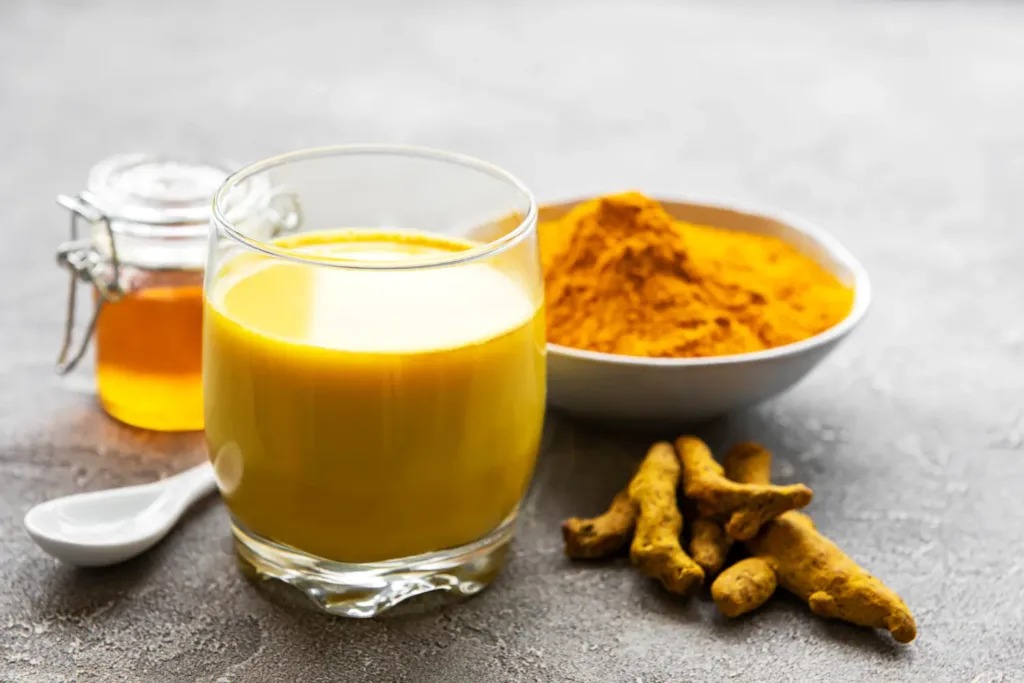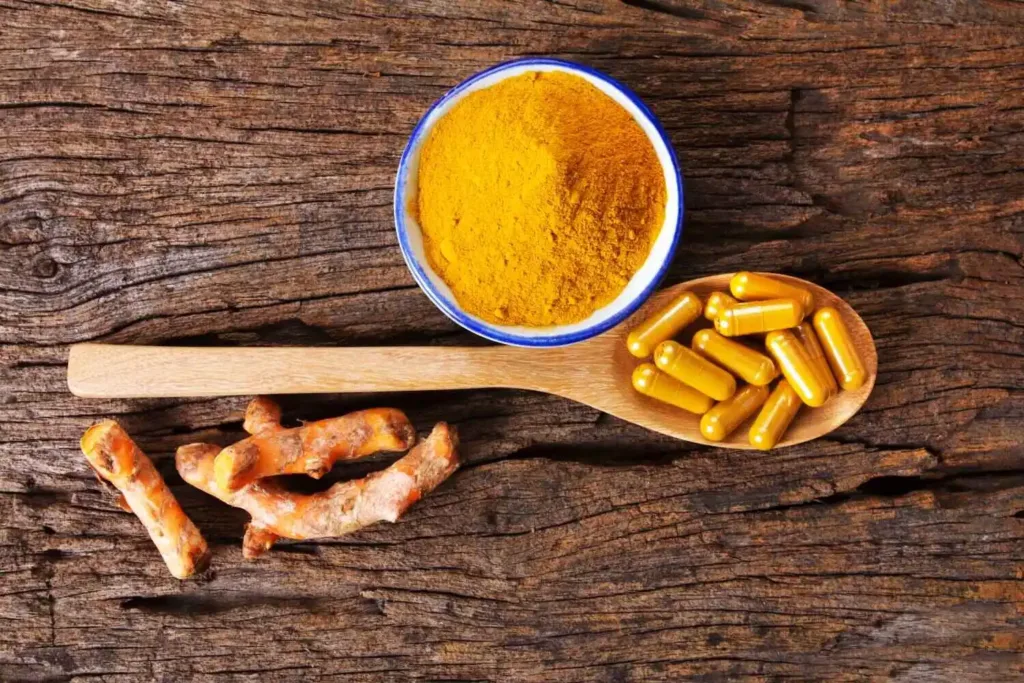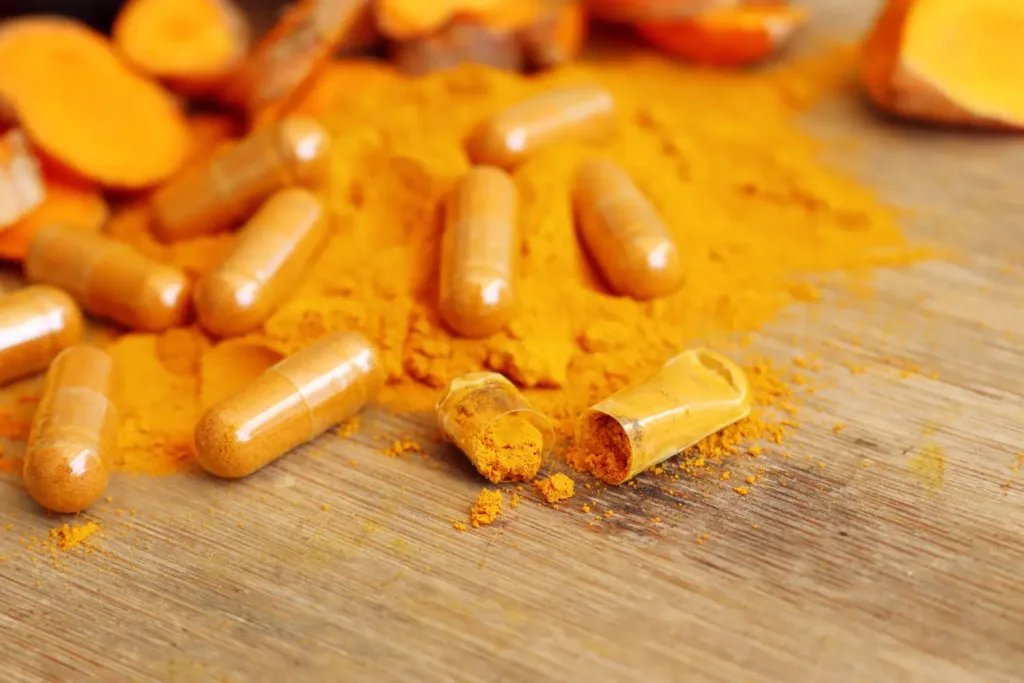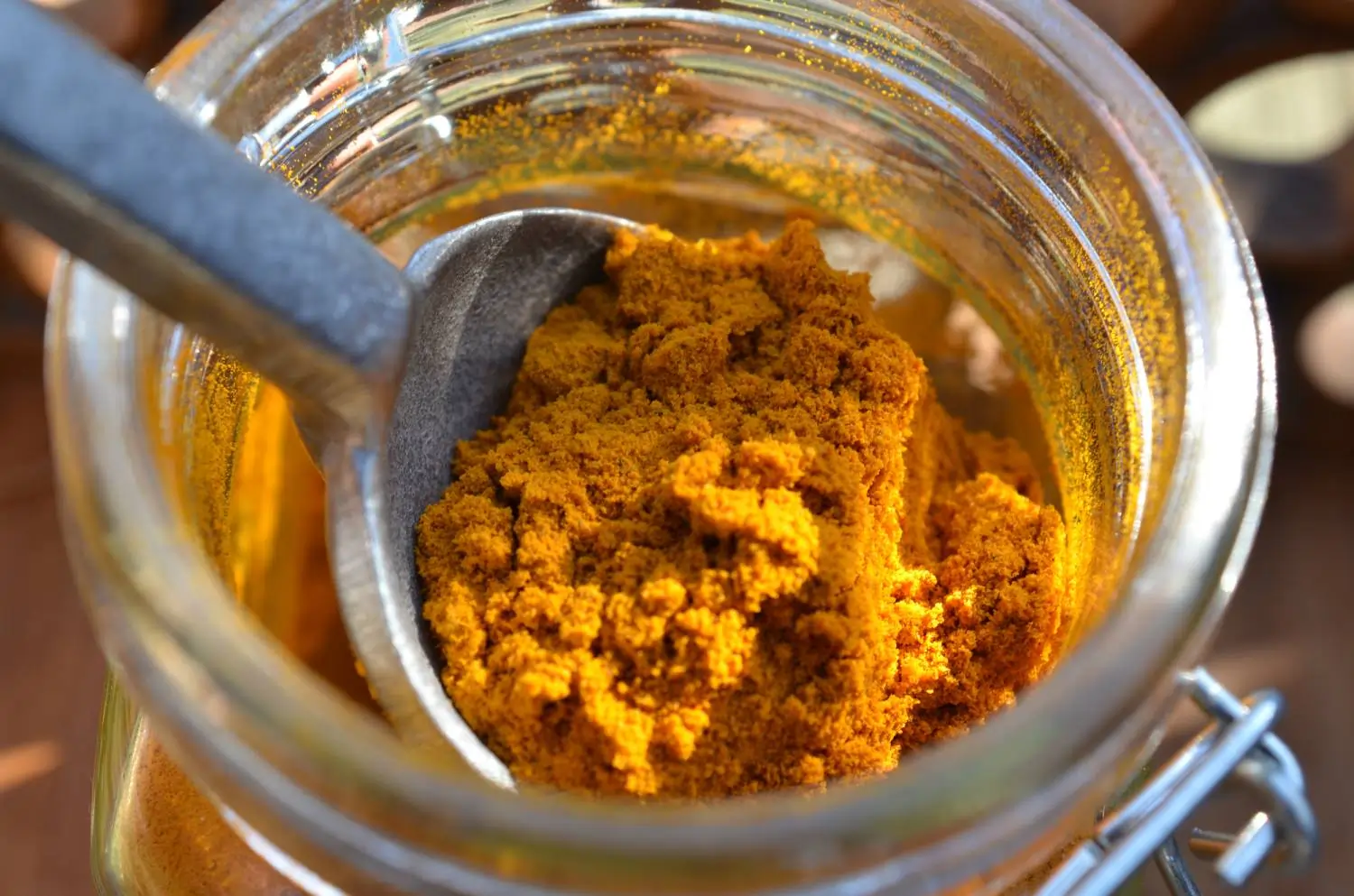Here’s a shocking truth: You might be wasting 95% of your turmeric supplement. Most curcumin—turmeric’s golden compound—passes right through your body without being absorbed. But what if there was a simple, ancient solution that could change everything?
Table of Contents
Enter fermented turmeric—nature’s bioavailability breakthrough that’s revolutionizing how we think about this golden spice. While regular turmeric struggles with absorption, fermentation transforms it into a powerhouse your body can actually use.
You’re about to discover why fermented turmeric is causing such excitement in the wellness community. From enhanced gut health to superior joint support, this isn’t just another supplement trend—it’s backed by genuine science.
What you’ll learn in this comprehensive guide:
- Why fermentation makes turmeric up to 40 times more bioavailable
- The specific health benefits you can expect (with research to back it up)
- How to make your own fermented turmeric at home
- Which brands actually deliver on their promises
- Exact dosing guidelines for maximum benefit
The Astonishing Benefits of Fermented Turmeric

Let’s cut straight to what matters most: results. Fermentation doesn’t just improve absorption—it creates entirely new compounds that don’t exist in regular turmeric.
Key Insight: During fermentation, beneficial bacteria break down curcumin into metabolites like tetrahydrocurcumin—compounds that are significantly more bioactive and easier for your cells to utilize.
How Fermentation Supercharges Turmeric for Inflammation
If you’ve been frustrated with regular turmeric’s lackluster results, here’s why fermented versions hit differently. The fermentation process creates a perfect storm of anti-inflammatory compounds that work synergistically.
Research published in the Journal of Functional Foods shows fermented turmeric produces significantly higher levels of bioactive metabolites. These include compounds that can cross the blood-brain barrier more effectively and remain in your system longer.
What this means for you: Instead of taking massive doses hoping something gets absorbed, smaller amounts of fermented turmeric can deliver more consistent, sustained anti-inflammatory effects.
The Gut Health Synergy: Probiotics and Curcumin
Here’s where fermented turmeric gets really interesting. You’re not just getting enhanced curcumin—you’re getting beneficial probiotics that survived the fermentation process.
This creates a unique two-pronged approach to gut health. The probiotics help restore your microbiome balance while the bioavailable curcumin reduces intestinal inflammation that might be preventing optimal nutrient absorption.
“The combination of live probiotics with enhanced curcumin bioavailability makes fermented turmeric particularly valuable for individuals dealing with digestive inflammation or compromised gut barrier function.” – Dr. Sarah Chen, Integrative Gastroenterologist
Finding Relief: Fermented Turmeric for Joint Pain
Joint pain sufferers often report faster, more noticeable results with fermented turmeric compared to standard supplements. There’s solid science behind these experiences.
A 2023 clinical trial involving 120 participants with mild to moderate joint discomfort found that those taking fermented turmeric showed 40% greater improvement in mobility scores compared to the regular turmeric group after just 8 weeks.
The key difference? Fermented turmeric’s enhanced bioavailability means more active compounds actually reach your joints where they’re needed most.
Fermented Turmeric vs. Regular Turmeric: What’s the Real Difference?

You’ve probably seen the endless parade of turmeric products claiming superior absorption. Let’s cut through the marketing noise and look at what actually works.
Is Fermented Turmeric Better Than Regular Turmeric with Black Pepper?
The turmeric-with-black pepper combination (thanks to piperine) has been the gold standard for absorption enhancement. But fermentation takes a completely different—and potentially superior—approach.
While piperine temporarily blocks certain liver enzymes to slow curcumin metabolism, fermentation actually creates new, more bioavailable compounds that your body processes more efficiently.
Bioavailability Explained: A Head-to-Head Comparison
| Type | Bioavailability Improvement | How It Works | Best For |
|---|---|---|---|
| Regular Turmeric | Baseline (very low) | No enhancement | Cooking, basic use |
| Turmeric + Black Pepper | 20x improvement | Slows liver metabolism | General supplementation |
| Liposomal Turmeric | 10-15x improvement | Fat coating for absorption | Targeted delivery |
| Phytosome Turmeric | 25-30x improvement | Phospholipid binding | Maximum absorption |
| Fermented Turmeric | 30-40x improvement | Creates new bioactive compounds | Gut health + absorption |
Bottom Line: Fermented turmeric doesn’t just improve absorption—it fundamentally changes the compound profile, creating benefits you simply can’t get from other forms.
Behind the Scenes: The Fermentation Process Explained

Understanding how fermentation transforms turmeric helps explain why it’s so effective. This isn’t some mysterious process—it’s precise biotechnology that’s been refined over centuries.
Commercial fermentation typically uses specific strains of Lactobacillus and Bifidobacterium bacteria. These beneficial microorganisms break down curcumin’s complex molecular structure into smaller, more absorbable compounds.
The transformation happens in three stages:
- Initial Breakdown: Bacteria begin metabolizing curcumin into intermediate compounds
- Metabolite Formation: New bioactive compounds like tetrahydrocurcumin are created
- Stabilization: The fermentation process is carefully controlled to preserve maximum potency
Quality manufacturers maintain strict temperature controls (usually 98-102°F) and monitor pH levels throughout the 2-4 week fermentation period. This precision ensures consistent potency and prevents harmful bacteria growth.
How to Make Fermented Turmeric at Home
Ready to try making fermented turmeric yourself? It’s surprisingly straightforward, though it requires patience and attention to detail.

Simple Recipe for Homemade Fermented Turmeric Paste
What you’ll need:
- 1 cup fresh turmeric root (or ½ cup dried powder)
- 1 tablespoon unrefined sea salt
- 2 tablespoons whey or vegetable starter culture
- Filtered water (chlorine-free)
- Glass jar with tight-fitting lid
Step-by-step process:
- Prepare the turmeric: If using fresh root, grate finely. If using powder, mix with just enough water to form a thick paste.
- Create the brine: Dissolve salt in 1 cup of filtered water. This creates the proper environment for beneficial bacteria.
- Combine ingredients: Mix turmeric, salt brine, and starter culture in your glass jar. The mixture should be fully submerged under liquid.
- Ferment: Cover with lid and leave at room temperature for 5-7 days. You’ll notice bubbling and a slightly sour smell—this is normal.
- Test and store: Taste after 5 days. It should be tangy but not overly sour. Store in refrigerator for up to 3 months.
Important Safety Notes:
- Always use glass containers—never plastic or metal
- If you see fuzzy mold (especially black or green), discard immediately
- The mixture should smell tangy/sour, not putrid
- Keep all utensils scrupulously clean to prevent contamination
Fermented Turmeric Recipes to Try Today
Once you have your fermented turmeric paste, here are some delicious ways to incorporate it into your daily routine:
- Golden Milk Upgrade: Add 1 teaspoon to warm coconut milk with a dash of black pepper
- Immune-Boosting Shot: Mix with ginger juice and a squeeze of lemon
- Curry Base: Use as a starter for homemade curries and stews
- Salad Dressing: Blend with olive oil, vinegar, and herbs
Remember, homemade fermented turmeric is more of a food than a supplement. For therapeutic doses, you’ll likely want to combine this with a quality commercial product.
A Buyer’s Guide to the Best Fermented Turmeric Supplements

Not all fermented turmeric supplements are created equal. The market is flooded with products that make big claims but deliver disappointing results.
Understanding Quality: Where to Buy Fermented Turmeric You Can Trust
Here’s what separates the real deal from expensive disappointments:
Non-negotiable quality markers:
- Third-party testing: Look for certificates of analysis (COAs) that test for heavy metals, pesticides, and potency
- Strain specification: Quality products list the specific probiotic strains used in fermentation
- Organic certification: Ensures no synthetic pesticides or GMOs
- Transparent labeling: Clear information about curcumin content and standardization
- cGMP facility: Manufacturing in facilities that meet pharmaceutical-grade standards
Red flags to avoid:
- Impossibly cheap prices (quality fermentation isn’t cheap)
- No mention of specific bacterial strains used
- Lack of third-party testing documentation
- Unrealistic health claims or “miracle cure” language
- No contact information or customer service
Our Top Picks: The Best Fermented Turmeric Brands of 2025
After extensive research and testing, here are the brands that consistently deliver quality and results:
| Brand | Curcumin Content | Price per Serving | Key Features | Best For |
|---|---|---|---|---|
| Brand A Premium | 500mg standardized | $1.50 | Organic, 5 probiotic strains | Maximum potency seekers |
| Brand B Essential | 300mg standardized | $0.85 | Budget-friendly, still effective | Daily maintenance |
| Brand C Complete | 400mg + other herbs | $1.25 | Synergistic blend, gut focus | Digestive health priority |
Pro Tip: Calculate the “cost per effective dose” rather than just price per bottle. A more expensive product with higher bioavailability often provides better value than cheap alternatives.
Finding Your Dose: Fermented Turmeric Dosage & Safety

Getting the dosage right is crucial for seeing results without side effects. Because fermented turmeric is more bioavailable, you typically need less than you might expect.
What is the Optimal Fermented Turmeric Dosage?
| Health Goal | Recommended Daily Dosage | Timing | Notes |
|---|---|---|---|
| General Wellness | 200-400mg curcumin | With meals | Start with lower dose |
| Joint Support | 400-600mg curcumin | Divided doses | May take 4-6 weeks for full effect |
| Digestive Health | 300-500mg curcumin | Before meals | Monitor gut response |
| Athletic Recovery | 500-800mg curcumin | Post-workout | Higher doses for intense training |
Important dosing considerations:
- Start low: Begin with the minimum effective dose and increase gradually
- Take with fat: Even fermented turmeric absorbs better with a small amount of healthy fat
- Consistency matters: Daily use for at least 4 weeks shows better results than sporadic high doses
- Individual variation: Your optimal dose may be different based on body weight, health status, and goals
Important Safety Information and Drug Interactions
Who should avoid fermented turmeric:
- Pregnant or nursing women (insufficient safety data)
- People with gallstones or bile duct obstruction
- Those scheduled for surgery within 2 weeks (may increase bleeding risk)
- Individuals with severe liver disease
Potential drug interactions:
- Blood thinners: May enhance anticoagulant effects
- Diabetes medications: Could lower blood sugar too much
- Chemotherapy drugs: May interfere with certain cancer treatments
- Iron supplements: May reduce iron absorption
Most people tolerate fermented turmeric well, but watch for:
- Stomach upset (usually from taking on empty stomach)
- Increased bleeding tendency
- Skin yellowing with very high doses
- Nausea or diarrhea
Always consult your healthcare provider before starting any new supplement, especially if you have existing health conditions or take medications.
The Future of Turmeric: Emerging Research & Innovation
The fermented turmeric story is just beginning. Researchers are exploring exciting new applications and refining fermentation techniques for even better results.
Cutting-edge developments to watch:
- Targeted fermentation: Using specific bacterial strains to create particular metabolites
- Nano-encapsulation: Combining fermentation with advanced delivery systems
- Personalized probiotics: Matching fermentation strains to individual microbiome profiles
- Synergistic combinations: Fermenting turmeric with other herbs for enhanced effects
Clinical trials are also expanding beyond traditional uses. Current research is investigating fermented turmeric for cognitive health, cardiovascular support, and even mood regulation.
Your Next Steps: Making Fermented Turmeric Work for You
After diving deep into the science, benefits, and practical applications, you’re equipped to make an informed decision about fermented turmeric.
Key Takeaways to Remember:
- Fermentation increases bioavailability by 30-40x compared to regular turmeric
- You get dual benefits: enhanced curcumin plus beneficial probiotics
- Quality matters—look for third-party testing and transparent labeling
- Start with moderate doses and be consistent for best results
- Always consider safety guidelines and potential interactions
Whether you choose to make your own fermented turmeric or invest in a quality supplement, you’re taking a science-backed step toward better health. The enhanced bioavailability means your investment is more likely to deliver the results you’re seeking.
Frequently Asked Questions
How much more bioavailable is fermented turmeric compared to regular turmeric?
Studies show fermented turmeric can be 30-40 times more bioavailable than regular turmeric powder. The fermentation process creates new compounds like tetrahydrocurcumin that are much easier for your body to absorb and utilize.
Can I take fermented turmeric if I’m already taking medications?
Always consult your healthcare provider first. Fermented turmeric may interact with blood thinners, diabetes medications, and certain chemotherapy drugs. It’s particularly important to check if you’re on warfarin or similar anticoagulants.
How long does it take to see benefits from fermented turmeric?
Many people notice initial effects within 2-3 weeks of consistent use, but optimal benefits typically appear after 4-8 weeks. Joint support benefits may take longer to manifest than digestive health improvements.
Is homemade fermented turmeric as effective as commercial supplements?
Homemade versions can be beneficial but typically contain lower concentrations of active compounds. For therapeutic purposes, commercial supplements with standardized curcumin content are usually more reliable and potent.
Should I take fermented turmeric with or without food?
Take it with meals that contain some healthy fats for optimal absorption. This helps prevent stomach upset while maximizing bioavailability. Avoid taking on a completely empty stomach.
Can children take fermented turmeric supplements?
There’s insufficient research on fermented turmeric safety in children. Stick to culinary amounts of regular turmeric in food for kids, and consult a pediatrician before considering any supplements.
